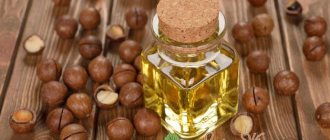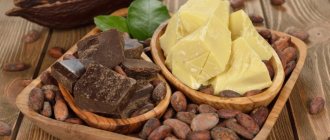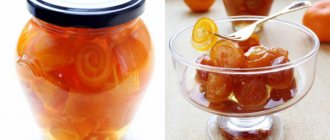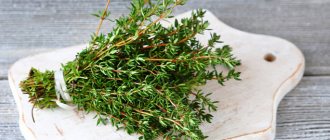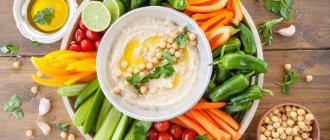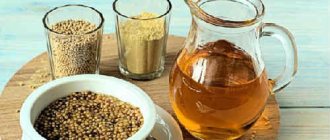What does amaranth look like and where does it grow?
Amaranth or amaranth, velvet, cockscomb is a herbaceous plant. It is distinguished by a branched stem about 1 m long. It can be annual or perennial. The leaves are oblong, pointed, green, less often red. It blooms with purple-red panicles, 0.2 m to 0.5 m long. At the end of August, seeds with a dense skin ripen in small fruit-boxes.
Shishritsa grows in warm temperate climates. Her homeland is South America. The amaranth family consists of more than 100 species of plants, divided into forage, vegetable and ornamental. About 20 species are found in Russia. Until the 18th century, amaranth was grown in Europe as an ornamental crop, and later its benefits were appreciated as livestock feed and for the production of cereals. Today it can be found in the wild in India and China.
Properties of amaranth
Nutritional value and composition | Vitamins | Minerals
How much does amaranth cost (average price for 1 pack)?
Moscow and Moscow region.
300 rub.
The annual herbaceous plant amaranth (Amaranthus) or amaranth has more than 65 subspecies and belongs to the Amaranth family. The appearance of amaranth is bright and unusual, as befits tropical plant species. The stem of amaranth is thick and stable, the leaves are elongated, the plant blooms with bright burgundy or crimson inflorescences in the form of long hanging tassels. The International Food Commission of the UN called the plant a “crop of the 21st century,” but the taste and beneficial properties of amaranth have been known to mankind for centuries.
Amaranth received its original name thanks to the Greek word Αμάρανθος, which literally means “flower that does not fade.” The name reflects the exceptional properties of amaranth. After harvesting, the plant is able to maintain its consumer characteristics for 4 months. Amaranth is popularly called “man’s winter friend” for its exceptional properties. In our latitudes, amaranth is best known under the names amaranth, cat's tail, velvet, cockscomb or axamite. The region of South America is considered the homeland of amaranth.
Amaranth seeds came to Europe thanks to the Spanish conquistadors. The ancient tribes of the Incas and Aztecs considered amaranth an important crop and made flour from the seeds of the plant. Bakery products made from amaranth have long been part of the diet of the ancient inhabitants of the American continent. Amaranth was considered as important a food product as beans, corn or wheat. Amaranth is still called “the wheat of the Aztecs and the bread of the Incas.” Amaranth appeared in the Russian Empire only at the end of the 19th century. The plant was classified as a weed and was cultivated for a long time only because of the bright appearance of amaranth.
Chemical composition and calorie content of amaranth
In the amaranth plant, the benefits and harms are due to a unique combination of nutrients, vitamins and minerals. Thanks to chemical research, the composition of ashiritsa was determined:
- vitamins A (146 mcg), C (43.3 mg), B1 (0.03 mg), B2 (0.16 mg), B5 (0.06 mg), B6 (0.19 mg), B9 (85 µg), PP (0.66 mg), K (1140 µg);
- trace elements iron (2.32 mg), zinc (0.9 mg), selenium (0.9 mg), manganese (0.89 mg), copper (0.16 mg);
- macroelements calcium (215 mg), phosphorus (50 mg), magnesium (55 mg), potassium (611 mg), sodium (20 mg);
- amaranthine (water-soluble antioxidant);
- polyphenols and flavonoids (16%);
- amino acids (15%), including lysine, which is useful for the body in the production of hormones, enzymes, anti-inflammatory antibodies, in the functioning of the cardiovascular system and tryptophan, which affects metabolic processes;
- protein (21%);
- dietary fiber (34%);
- vegetable oils, including polyunsaturated fatty acids Omega-3 and Omega-6 (9%);
- squalene (11%) – stops the proliferation of cancer cells, has regenerating and immunostimulating properties;
- pectin;
- starch (60%);
- lipids (85%);
- phytosterols;
- betacyanin pigments.
Both seeds and leaves are useful.
Nutritional value of 100 g of shiritsa:
- proteins – 13.56 g;
- carbohydrates – 68.55 g;
- fats – 7.02 g;
- fiber – 6.7 g;
- ash – 2.88 g;
- calorie content – 371 kcal.
Attention!
Amaranth seeds and leaves contain approximately 30% more protein than oats, rice. According to this indicator, it is 2 times healthier than soy or wheat. This plant is recommended for daily consumption by the World Health Organization.
Calorie content Amaranth, grains, uncooked. Chemical composition and nutritional value.
Nutritional value and chemical composition of "Amaranth, grains, uncooked."
The table shows the nutritional content (calories, proteins, fats, carbohydrates, vitamins and minerals) per 100 grams of edible portion.
| Nutrient | Quantity | Norm** | % of the norm in 100 g | % of the norm in 100 kcal | 100% normal |
| Calorie content | 371 kcal | 1684 kcal | 22% | 5.9% | 454 g |
| Squirrels | 13.56 g | 76 g | 17.8% | 4.8% | 560 g |
| Fats | 7.02 g | 56 g | 12.5% | 3.4% | 798 g |
| Carbohydrates | 58.55 g | 219 g | 26.7% | 7.2% | 374 g |
| Alimentary fiber | 6.7 g | 20 g | 33.5% | 9% | 299 g |
| Water | 11.29 g | 2273 g | 0.5% | 0.1% | 20133 |
| Ash | 2.88 g | ~ | |||
| Vitamins | |||||
| beta carotene | 0.001 mg | 5 mg | 500000 g | ||
| Lutein + Zeaxanthin | 28 mcg | ~ | |||
| Vitamin B1, thiamine | 0.116 mg | 1.5 mg | 7.7% | 2.1% | 1293 g |
| Vitamin B2, riboflavin | 0.2 mg | 1.8 mg | 11.1% | 3% | 900 g |
| Vitamin B4, choline | 69.8 mg | 500 mg | 14% | 3.8% | 716 g |
| Vitamin B5, pantothenic | 1.457 mg | 5 mg | 29.1% | 7.8% | 343 g |
| Vitamin B6, pyridoxine | 0.591 mg | 2 mg | 29.6% | 8% | 338 g |
| Vitamin B9, folates | 82 mcg | 400 mcg | 20.5% | 5.5% | 488 g |
| Vitamin C, ascorbic acid | 4.2 mg | 90 mg | 4.7% | 1.3% | 2143 g |
| Vitamin E, alpha tocopherol, TE | 1.19 mg | 15 mg | 7.9% | 2.1% | 1261 g |
| beta tocopherol | 0.96 mg | ~ | |||
| gamma tocopherol | 0.19 mg | ~ | |||
| delta tocopherol | 0.69 mg | ~ | |||
| Vitamin RR, NE | 0.923 mg | 20 mg | 4.6% | 1.2% | 2167 g |
| Betaine | 67.6 mg | ~ | |||
| Macronutrients | |||||
| Potassium, K | 508 mg | 2500 mg | 20.3% | 5.5% | 492 g |
| Calcium, Ca | 159 mg | 1000 mg | 15.9% | 4.3% | 629 g |
| Magnesium, Mg | 248 mg | 400 mg | 62% | 16.7% | 161 g |
| Sodium, Na | 4 mg | 1300 mg | 0.3% | 0.1% | 32500 g |
| Sera, S | 135.6 mg | 1000 mg | 13.6% | 3.7% | 737 g |
| Phosphorus, Ph | 557 mg | 800 mg | 69.6% | 18.8% | 144 g |
| Microelements | |||||
| Iron, Fe | 7.61 mg | 18 mg | 42.3% | 11.4% | 237 g |
| Manganese, Mn | 3.333 mg | 2 mg | 166.7% | 44.9% | 60 g |
| Copper, Cu | 525 mcg | 1000 mcg | 52.5% | 14.2% | 190 g |
| Selenium, Se | 18.7 mcg | 55 mcg | 34% | 9.2% | 294 g |
| Zinc, Zn | 2.87 mg | 12 mg | 23.9% | 6.4% | 418 g |
| Digestible carbohydrates | |||||
| Starch and dextrins | 57.27 g | ~ | |||
| Mono- and disaccharides (sugars) | 1.69 g | max 100 g | |||
| Glucose (dextrose) | 0.27 g | ~ | |||
| Maltose | 0.01 g | ~ | |||
| Sucrose | 1.4 g | ~ | |||
| Fructose | 0.01 g | ~ | |||
| Essential amino acids | |||||
| Arginine* | 1.06 g | ~ | |||
| Valin | 0.679 g | ~ | |||
| Histidine* | 0.389 g | ~ | |||
| Isoleucine | 0.582 g | ~ | |||
| Leucine | 0.879 g | ~ | |||
| Lysine | 0.747 g | ~ | |||
| Methionine | 0.226 g | ~ | |||
| Threonine | 0.558 g | ~ | |||
| Tryptophan | 0.181 g | ~ | |||
| Phenylalanine | 0.542 g | ~ | |||
| Nonessential amino acids | |||||
| Alanin | 0.799 g | ~ | |||
| Aspartic acid | 1.261 g | ~ | |||
| Glycine | 1.636 g | ~ | |||
| Glutamic acid | 2.259 g | ~ | |||
| Proline | 0.698 g | ~ | |||
| Serin | 1.148 g | ~ | |||
| Tyrosine | 0.329 g | ~ | |||
| Cysteine | 0.191 g | ~ | |||
| Sterols (sterols) | |||||
| Phytosterols | 24 mg | ~ | |||
| Saturated fatty acids | |||||
| Saturated fatty acids | 1.459 g | max 18.7 g | |||
| 14:0 Miristinovaya | 0.011 g | ~ | |||
| 16:0 Palmitinaya | 1.154 g | ~ | |||
| 18:0 Stearic | 0.223 g | ~ | |||
| 20:0 Arakhinovaya | 0.052 g | ~ | |||
| 22:0 Begenovaya | 0.018 g | ~ | |||
| Monounsaturated fatty acids | 1.685 g | min 16.8 g | 10% | 2.7% | |
| 18:1 Oleic (omega-9) | 1.671 g | ~ | |||
| 20:1 Gadoleic (omega-9) | 0.014 g | ~ | |||
| Polyunsaturated fatty acids | 2.778 g | from 11.2 to 20.6 g | 24.8% | 6.7% | |
| 18:2 Linolevaya | 2.736 g | ~ | |||
| 18:3 Linolenic | 0.042 g | ~ | |||
| 18:3 Omega-3, alpha-linolenic | 0.042 g | ~ | |||
| Omega-3 fatty acids | 0.042 g | from 0.9 to 3.7 g | 4.7% | 1.3% | |
| Omega-6 fatty acids | 2.736 g | from 4.7 to 16.8 g | 58.2% | 15.7% |
The energy value of Amaranth, grains, uncooked is 371 kcal.
- cup = 193 g (716 kcal)
Primary source: USDA National Nutrient Database for Standard Reference. Read more.
** This table shows the average levels of vitamins and minerals for an adult. If you want to know the norms taking into account your gender, age and other factors, then use the “My Healthy Diet” application.
Healing properties of amaranth
In medicine, the beneficial composition of the amaranth plant is used for the prevention and treatment of the following diseases and problems:
- lowering cholesterol levels with phytosterols;
- treatment of hypertension and coronary heart disease;
- prevention of osteoporosis due to the presence of calcium, magnesium and phosphorus;
- treatment of calcium deficiency;
- normalization of metabolism;
- prevention of the development of heart and vascular diseases;
- reducing harm from cancer cell growth;
- treatment of cataracts, blepharitis, conjunctivitis, night blindness;
- stimulation of brain function – properties of zinc and vitamin B;
- respiratory tract diseases;
- treatment of bleeding gums;
- skin diseases, including eczema.
The benefits of amaranth for the human body are not limited to the listed list of properties. The balanced content of vitamins and elements in different parts of the plant makes amaranth useful in dietary nutrition. At the same time, the harm of mono-diets in sports nutrition is reduced and muscle growth is stimulated.
What are the benefits of amaranth leaves?
Juice is obtained from the leaves of the plant, which is drunk 1 tbsp. l. adults and 1 tsp. children - in such quantities there will be no harm to anyone. As a source of natural protein, ashiritsa is useful in baby food. The juice has medicinal properties and helps patients with tuberculosis, bronchitis, and asthma. The leaves are rich in amino acids: threonine, cystine, methionine, phenylalanine, leucine. Constant use will enrich the body with useful substances and have a beneficial effect due to the properties of the plant:
- strengthening the immune system;
- normalization of hormonal levels;
- protection against fungal infection;
- stimulation of the reproductive system;
- anti-inflammatory and analgesic properties;
- stimulation of insulin production;
- improving the functioning of the respiratory and cardiovascular systems;
- normalization of temperature.
Attention! A red pigment is obtained from amaranth leaves, which is used in cooking as a natural dye. There will be no harm from it when used.
Benefits of amaranth seeds
Regular consumption of acorn seeds is useful for reducing pain and normalizing the menstrual cycle in women. During menopause it will help maintain normal hormonal levels. Men benefit from the property of improving potency, as well as in the treatment of prostatitis.
Athletes eat amaranth seeds for:
- accelerating muscle growth while restoring the body after intense physical training,
- development of endurance,
We recommend reading: Angelica root (angelica): medicinal properties, application, photo and description
adjusting acid and water balance without harm to the body.
Useful in the treatment of calcium and vitamin D deficiency. Uncontrolled use may be harmful or cause an allergic reaction. Diabetics appreciate the property of plant seeds to reduce blood glucose levels.
The benefits of amaranth grains are noticeable for the whole body. She calls:
- improved digestion;
- removal of toxins and waste;
- support the liver and adrenal glands;
- beneficial effect on the nervous system;
- normalization of pressure.
Useful properties of amaranth
The unique chemical composition of agaric has largely determined its scope of application.
Thus, the ancient Aztecs fed newborn children with amaranth, and warriors always took grains with them on long campaigns as a source of strength and health. At the moment, amaranth is officially recognized as a remedy that helps in the treatment of inflammation of the genitourinary system, anemia, atherosclerosis, hemorrhoids, loss of strength, vitamin deficiency, obesity, diabetes, skin diseases, neuroses, burns, periodontal disease, stomatitis, stomach and duodenal ulcers.
Amaranth oil as a source of squalene
The oil is saturated with unique substances, vitamins and microelements, so its health benefits cannot be overestimated. Thus, squalene is a substance that captures oxygen and saturates tissues and organs with it. At the same time, squalene is one of the antitumor agents that prevent the occurrence of cancer. It is also a powerful immunostimulant, which until recently could only be obtained from the liver of a deep-sea shark, which is why it was the most expensive and highly scarce product. The problem was not only the high cost, but also the low content of squalene in the shark’s liver - only 1.5%.
Squalene is necessary for deep-sea sharks solely so that they can survive severe hypoxia at great depths (lack of oxygen). People need it as a fungicidal, antimicrobial and anticarcinogenic agent, since it is known that hypoxia leads to aging of the body and the appearance of malignant tumors. In addition, this substance improves the body’s immune system and thereby ensures its resistance to all diseases.
Amaranth oil contains from 8 to 10% squalene, which is several times higher than the amount in shark liver! These are incredible benefits for the body! It promotes better absorption of vitamin A and improved tissue regeneration of internal organs, which significantly speeds up the recovery of patients after radiation therapy.
What are the benefits of amaranth fiber?
In pharmacies and specialized departments of stores you can find fiber from amaranth seeds for sale.
It is produced in the form of a powder intended for dietary use. The composition contains 50% fiber, 20% protein, calcium, phosphorus, zinc, magnesium, iron, chlorine, etc. Fiber is a source of ideal protein, minerals and water-soluble vitamins (PP, C, E, B1, B6, B2, B12 ). It also contains quercetin, anthocyanidins, and resveratrol. The product helps cleanse the large intestine, normalizes the composition of intestinal microflora and helps improve its function. The product is recommended for use when breastfeeding a child, dystrophy, severe psycho-emotional and physical stress, chronic colitis, dysbacteriosis, prostate diseases, as well as when living and working in environmentally hazardous areas. The course of treatment is 30 days. You must first fill it with water (it would be better with kefir or juice) and take 1-2 dessert spoons with meals (three times a day). I sometimes add fiber to porridge or to a bowl of soup, it’s more pleasant and convenient to eat, otherwise adding only plain water will make it very difficult to drink because of the unpleasant taste.
Video about the benefits of shiritsa:
The benefits of amaranth for pregnant women and children
Shchiritsa is useful for pregnant women and babies. The leaves and seeds contain a lot of folic acid. This vitamin is especially useful during the first weeks of pregnancy. Its deficiency harms the formation and development of the child’s brain and spinal cord.
Children are given 1 tsp daily. amaranth juice with a drop of honey. This dose contains the daily requirement of protein. Taking ashiritsa stimulates the growth and development of children and becomes the key to their health.
Attention! Before taking amaranth juice or infusion, you should consult your doctor or pediatrician. An allergic reaction is possible, it will not cause any other harm.
Benefits of amaranth seeds
1. Amaranth is saturated with natural protein, only due to this you can understand what beneficial qualities the product has. Protein is easily absorbed by the body and processed into amino acids. Protein is necessary for humans to produce energy and synthesize new cells.
2. Scientific research has confirmed that the plant contains peptides. They have a positive effect on tissues, fighting inflammatory processes of various types. The seeds resist the development of free radicals in the body.
3. The leaves of the plant are rich in minerals. Due to this, raw materials have a positive effect on the health of bone tissue. The development of targeted diseases is minimized. To avoid serious illnesses, it is enough to include the product in your daily diet.
4. Amaranth will bring considerable benefits to the digestive system if consumed daily. In addition to various substances, amaranth is rich in fiber. Due to this, food is easier to digest and beneficial enzymes are absorbed. The product is recommended for people who suffer from celiac disease.
5. Amaranth seeds have proven themselves well in strengthening the cardiovascular system. The benefits and harms depend on the correct intake. Before taking grains, it is worth finding out the daily intake. The product removes bad cholesterol from the body. The seeds contain vitamin K, which is involved in blood clotting. The plant is also rich in the essential enzyme potassium.
6. Often, many people develop a problem in the form of varicose veins in adulthood. Amaranth contains rutin, which successfully copes with this disease. Rutin significantly strengthens the circulatory system and all tissues and membranes. Ascorbic acid is directly involved in collagen synthesis. The substance also strengthens capillaries.
7. The plant contains carotenoids, including retinol. Vitamin A is essential for maintaining eye health. Due to its antioxidant properties, amaranth prevents the development of cataracts and macular degeneration. Systematic use will help preserve vision.
8. Pregnant ladies are strongly recommended to include amaranth in their daily menu. The product contains the necessary enzymes for the body and the development of the fetus in the womb. In addition, folic acid is present in sufficient quantities in the raw material. A small addition of seeds to simple dishes will provide tissues and organs with everything they need.
9. Amaranth seeds are recommended for people who are overweight or simply trying to lose weight. The benefits and harms of raw materials largely depend on the method of administration and the amount of product consumed. Before taking the seeds, you should consult a nutritionist.
Is amaranth good for weight loss?
A number of studies have confirmed the benefits of consuming amaranth in the fight against excess weight. Ashiritsa derivatives are used as components of various diets:
- oil for salad dressing;
- bran is useful for accelerating metabolism;
- baking flour does not harm your figure;
- meal or cake is useful as a source of protein;
- tea and agaric flakes.
Amaranth goes well with other products and complements any dish with a sufficient amount of nutrients, since the main thing in any diet is a balanced diet.
Traditional medicine recipes with amaranth
The Indians were the first to appreciate the beneficial properties of the herb. Amaranth is valued in folk medicine for its antibacterial, hemostatic and anti-inflammatory properties. The seeds and leaves have a general strengthening effect and are able to fully provide the body with all the necessary vitamins, macro- and microelements. Self-medication with amaranth can be harmful to health. Therefore, you need to consult your doctor.
Amaranth oil is a source of large amounts of vitamins and acids. It has a pronounced anti-inflammatory property and is actively used both in medicine and in cosmetology.
Amaranth decoction
The main component is a plant mixture (dried crushed leaves, roots and flowers of amaranth). Fresh, finely chopped roots are equally beneficial.
You need to pour 2 tbsp. l. mixture (about 15 g) 200 ml of boiling water, boil for 10 minutes over low heat. The broth is cooled and filtered. Take half a glass three times a day half an hour before meals. It has a general strengthening property. Improves taste 1 tsp. honey and ½ tsp. lemon juice.
Amaranth infusion
The classic infusion is prepared from 1 tbsp. l. chopped amaranth leaf and 1 tbsp. water. It is boiled in a water bath for a minute, then boiling water is added to the original volume.
Take 2 sips chilled 30 minutes before meals for 2 weeks to treat the gastrointestinal tract. Rinse the gums, taking advantage of the anti-inflammatory properties. Tampons with shiritsa infusion will ease menstrual syndrome and are useful for the prevention of ovarian cysts.
A remedy for diseases of the genitourinary system and enuresis is prepared from fresh leaves. For this, 3 tbsp. l. Finely chopped leaves are poured into 1 liter of boiling water for 6 hours. Take a glass before bedtime.
Bath with amaranth
The anti-inflammatory and regenerating properties of the plant are used in the treatment of insect bites, burns, bedsores and skin diseases. Take baths with amaranth 3 times a week for half an hour. They are harmful to people with exacerbation of pancreatitis, urolithiasis, and cholecystitis.
To prepare in a water bath, boil 400 g of crushed leaves and stems in 2 liters of water for 15 minutes. The mixture is filtered and poured into a full bath.
Amaranth tea
It contains no caffeine, so there will be no harm from frequent use. There is a noticeable benefit as an additional remedy in treating the body from:
- diabetes mellitus;
- anemia;
- painful menstrual syndrome;
- problems with lactation;
- arthritis, arthrosis and osteochondrosis;
- insomnia, nervous system disorders;
- acute and chronic respiratory diseases;
- for weight loss.
To brew healthy tea, you need to pour 1 tbsp. l. dry or fresh amaranth leaves and inflorescences and ½ tsp. mint 100 ml hot water (~80 °C), leave in a closed kettle for 7 minutes. Then add another 100 ml of boiling water and a spoonful of honey for a more pleasant taste.
Composition of shiritsa: calorie content and vitamins
The grains contain proteins (up to 16%), fats (up to 7%), starch (up to 62%), vitamins (thiamine, riboflavin, pantothenic, folic, ascorbic acid, pyridoxine, choline, niacin equivalent), pectin, macro- and trace elements (magnesium, copper, iron, zinc, selenium, manganese, calcium, phosphorus, sodium, potassium).
When compared with wheat, ashiritsa protein is 2 times higher than wheat protein! More than 50% of proteins are globulin and albumin, which are characterized by a balanced amino acid composition. Fat is based on linolenic, linoleic and oleic fatty acids.
Shchiritsa is a champion in magnesium content: for example, 100 g of rice contains only 50 g of this useful microelement, wheat - 140 mg, while amaranth - 240 mg!
The stems and leaves, similar to spinach, contain sterols. They contain a lot of vitamins C, E, B1, B2, flavonoids (quercetin, rutin, trefolin), proteins, carbohydrates, and minerals.
Calorie content of amaranth (seeds) per 100 g - 374 kcal (1565 kJ):
- Proteins - 14.5 g
- Fat - 6.5 g
- Carbohydrates - 66.7 g
Use of amaranth in cooking
Despite its unusual taste, amaranth is an indispensable ingredient in the kitchen. The benefits of even a small supplement are very noticeable. Amaranth is eaten in the form of:
- Salads and soups made from the leaves of the plant. They are first doused with boiling water or boiled.
- Salad dressing, which is prepared on the basis of amaranth oil. You should not fry it - when heated, beneficial substances turn into harmful carcinogens.
- Pastries and sweets. They are prepared with the addition of seeds, flour, and bran.
- Garnish. Amaranth seed porridge is healthier than rice or pasta.
- Peruvian beer.
Benefits and recipe of amaranth porridge
Scientists have confirmed the benefits of amaranth grains when eating porridge for one month. It exhibits anti-inflammatory properties on the liver and gall bladder, normalizes intestinal microflora and promotes the removal of toxins, strengthens the immune system. There is no harm from gluten in the product, so porridge can be given even to infants, after consulting with a pediatrician.
It's easy to prepare:
- Cereals and water (or milk) are taken in a ratio of 1 to 3.
- Amaranth is added to boiling water.
- Stir the porridge until the seeds settle.
- Close with a lid and leave for 40 minutes. Shchiritsa will explode when heated. Check the water level periodically and add if necessary.
We recommend reading: Health benefits of capers: composition, calorie content
The porridge is tender and has a slight nutty flavor. It can be made healthier with a pinch of cinnamon, dried fruits, nuts or honey.
Application of amaranth
Amaranth has a nutty and toasty flavor, so it works well in many dishes, from breakfast to dessert. Here are some ideas on how to include amaranth in your daily diet:
- Mix amaranth into fruits and nuts instead of just using oatmeal.
- Serve amaranth in place of rice, pasta, orzo, couscous or risotto.
- Add amaranth to soup or chili to create a thicker texture.
- Make scones with amaranth and honey.
- Make amaranth pudding.
- Use amaranth flour to make gluten-free baked goods.
- Add amaranth to smoothies for a nutty flavor.
A great way to add amaranth to your diet is to eat it for breakfast. Many people start their day with oatmeal - try amaranth porridge instead, or mix amaranth into oatmeal. It adds a nutty flavor to your breakfast, and mixes great with fruit and yogurt.
What are the benefits of sprouted amaranth seeds?
Amaranth sprouts bring benefits to the whole body. It is a valuable source of energy. Eating sprouted seeds at night is harmful - there is a high probability of overexcitation and insomnia. Taken for medicinal purposes regularly or in courses of 2 months with a break of 6 months for prevention. The benefit is manifested in antitumor properties. Substances in acorn sprouts harm cancer cells, inhibiting their reproduction.
Germinate the seeds in a glass container ¾ covered with water in a bright place, without direct sunlight. The benefits of sprouted amaranth for the body are noticeable both from fresh sprouts and when stored in the refrigerator.
Benefits of amaranth bran
The seed skin contains much more useful substances than the kernels. And of all the bran of grain crops, amaranth is considered the best, since it simultaneously contains in large quantities:
- dietary fiber (97%);
- unsaturated fats;
- amino acids;
- vitamins B, PP and E;
- magnesium, calcium, potassium, iron, phosphorus and sodium.
Their benefits as a source of fiber are irreplaceable. Dietary fiber has the ability to bind and remove toxins from the gastrointestinal tract. Amaranth normalizes metabolic processes, reduces cholesterol levels, and removes excess weight. You can eat 40–50 g of bran per day without harm to the body.
Content of vitamins and microelements
The biochemical composition of amaranth oil contains a whole complex of unique biologically active substances, macro- and microelements, essential amino acids, organic compounds and vitamins. Amaranth oil is rich in B vitamins (B1, B3, B4, B6, B2, B9), PP, contains vitamin D, vitamin A, H and vitamin E.
In addition, this product contains large quantities of proteins, biogenic amines, carotenoids, phytostyrols and mono- and polyunsaturated fatty amino acids - arginine, alanine, lecithin, proline, serine, finylalanine, histamine. The product contains a high percentage of zinc, magnesium, calcium, potassium, phosphorus, sodium, selenium, copper, and iron.
The uniqueness of the chemical composition of amaranth oil lies in the high content of squalene and vitamin E, which has an active tocotrienol form.
How is amaranth used in cosmetology?
Amaranth oil is beneficial for the beauty of the skin. Two drops are added without harm to skin and hair care products. In this concentration the plant has the following properties:
- rejuvenating and tightening the skin;
- protective from external irritants;
- hydration and nutrition;
- evens out facial tone;
- strengthens nails and hair.
Mask for the face
Masks are effective skin treatments. You can prepare them from amaranth with the following properties:
- Moisturizing mask for dry skin. Mix 1 tbsp. l. amaranth oil, honey, 1 egg yolk.
- Acne prevention. Apply 2 tbsp to your face for 30 minutes. l. amaranth oil, 2 tbsp. l. orange juice and ½ tsp. lemon juice.
- To prevent peeling of the skin, apply a mask of sour cream and butter in a ratio of 3 to 2 to the problem areas of the skin for 15 minutes.
- To tighten pores and deep clean. For 15 minutes, apply a mixture of 1 part clay and 2 parts oil to warm skin. After the procedure, wash with warm water.
Lotion
The simplest lotion is freshly squeezed amaranth juice. To preserve its properties, it is stored in a glass container in the refrigerator. Infusion-lotion is prepared from 1 tbsp. l. dry leaf or 2-3 tbsp. l. fresh leaves. The plant is poured with 250 ml of boiling water and left for 1–1.5 hours. Afterwards they filter. It is useful to wipe the skin of the face and neck with it twice a day.
Amaranth for hair beauty
In terms of its properties, a decoction of ashiritsa leaves is classified as an air conditioner. To strengthen hair, amaranth is used 1-2 times a week. To prepare the decoction, infuse 3 tbsp. l. dry leaves in 1 liter of boiling water for 24 hours. Before use, dilute with warm water in a ratio of 1 to 1.
Amaranth oil is useful as a remedy for hair loss. A few drops of oil are rubbed into the scalp at night for 2–6 months. Before the first use, you need to do a test on any area of the skin to make sure that there is no harm to the body - allergies.
Application
Amaranth oil is widely used in cosmetology, in the presence of mature, dry, aging, rough skin. It is recommended to make masks or creams for the face and body using amaranth oil. The oil is effective for skin diseases, cuts, wounds, and abrasions.
This product is also widely used in cooking - as a dressing for vegetable salads. Amaranth oil is also one of the ingredients in baked goods, pancakes, and pancakes. Amaranth oil can also be used for cooking deep-fried dishes, and in the case of heat treatment, the vitamin composition of the product remains virtually unchanged.
Market Analytics
- COVID-19 is changing the rules of the game in the cosmetics market
- Beauty of the future: cosmetic innovations 2020
- New ingredients are the driving force of the cosmetics industry
Convenient search for beauty salons on our website
Beauty salons in Moscow Beauty salons in St. Petersburg Beauty salons in Ekaterinburg Beauty salons in Novosibirsk
Latest blog posts on our website
- Naturecream / Geranium (Pelargonium) oil for skin health and beauty
- Prostye-sovety / Save on a beauty salon: procedures that can be done at home
- Naturecream / Growth Factor - brings back youth?
- Oksana-Lezina / 3 effective abdominal exercises from a fitness instructor for beginners
- Prostye-sovety / Making perfect curls at home
- Prostye-sovety / Which hair removal method to choose
- Naturecream / Wrinkles Puppets
- Naturecream / PEPHA-TIGHT - instant skin lifting
- Naturecream / Blue light - a danger to the skin
- Naturecream / Cocoa Butter – A treat for the skin
Latest forum topics on our website
- Mrs._Smith / Badly sunburned! What to do?((
- Ice / Is it necessary to combine fitness classes with a diet?
- Antonova / What can be used for hair loss?
- Radio operatorKat / Who was on a protein diet?
- Suzanna / Mesotherapy on the face
Other articles in this section
| Rendered pork fat |
| Milk thistle oil Milk thistle is a valuable medicinal plant and is a relative of the common thistle. The healing properties of the plant have been known for a very long time. Milk thistle is used for treatment in different forms - infusions, decoctions, powder, but the most effective and convenient in composition is oil prepared from parts of the plant. It absorbs all medicinal substances in a more concentrated form, therefore the treatment and prevention of diseases with the help of oil is more effective than with the help of an extract or powder. |
| Walnut oil Walnuts have been cultivated since very ancient times. All parts of this tree are used by humans. A tasty, healthy jam that contains a lot of iodine is made from green unripe fruits. And the seeds are used in cooking in many dishes. From these very seeds, through cold pressing, a unique nut oil is produced, which has an unusual “nutty” flavor and is highly valued for its healing properties. It belongs to elite and expensive products. |
| Nut oil Nut oil is a collective name for vegetable oils that are produced by cold pressing the grains (kernels) of various types of nuts. As a rule, only mature nut kernels that have been left for some time after harvesting are used to make nut butter. There is no type of nut in nature whose grains are not suitable for preparing this type of product. It should be noted that in terms of their chemical composition, nut oils are superior to most types of vegetable oils and are more expensive. |
| Chicken fat It is not for nothing that chicken meat and fat are considered excellent dietary products. The use of these products is not limited to culinary delights. Their healing effect is also well known. |
| Canola oil Consumption of all kinds of oils of natural origin is completely commonplace. Shops and shopping centers offer a wide selection of olive, nut and sunflower oils. But there is a little-known product - canola oil. First of all, it should be noted that this oil is not a product of nature. |
| Margarine Extra The history of margarine goes back many years. For the first time, this product was created in order to produce complete nutrition for soldiers in military service in order to fully replace butter. The production of margarine was more economical, using chemicals, the main one of which was the so-called “salomas”. The first versions of the product were not very successful, they did not have a good taste, but over time the situation changed dramatically. Modern types of margarine are made from natural ingredients; they are not inferior in taste to butter, and in some respects even surpass them. |
| Cottonseed oil Cottonseed oil is produced by cold pressing of cotton seeds. Unrefined oil has a dark red color and a rather pungent odor. After processing, the already refined oil has a light yellow color, is practically odorless, and is characterized by a slight nutty flavor. Cottonseed oil is very popular in Central Asia - there it is used everywhere in its homeland, like sunflower oil in Russia. It is also popular among residents of America, where cotton is considered a national treasure. |
| Peanut oil Peanut oil can be obtained by cold pressing or by exposing the nut pulp to organic matter. The cooking method you choose affects the color of the finished product. For example, in Asia, unrefined nut oil is widely used, which has a distinct nutty aroma and flavor. In Europe and America, the production of refined peanut oil is popular. |
| Table milk margarine If you take butter and table milk margarine in your hands, you will notice that they are like twins in appearance. They are similar not only in appearance. The body's digestibility, composition, and nutritional value of these products are also very similar. You can also note a similar taste and aroma. This happens because fermented milk is added to table milk margarine during the manufacturing process. That is, emulsification of milk and fat occurs. Pasteurized milk is fermented with bacteria, so it takes on the aroma and taste of milk. And it is worth noting that only milk margarine contains the addition of whale oil in the amount of 25%. |
Harm of amaranth and contraindications
Almost everyone can use the plant. It will cause harm if there is:
- individual intolerance, allergy to any component;
- kidney and gallstones;
- pancreatitis;
- cholecystitis.
Amaranth is introduced into the diet in small doses. In order for treatment with preparations from the plant to bring benefit and not harm, it is recommended to consult a doctor.
Important! If after taking an amaranth-containing product you experience slight dizziness or nausea, this is a consequence of the body being saturated with oxygen. That is, a pronounced positive result from taking amaranth.
